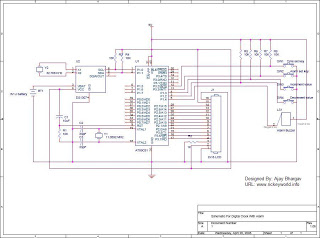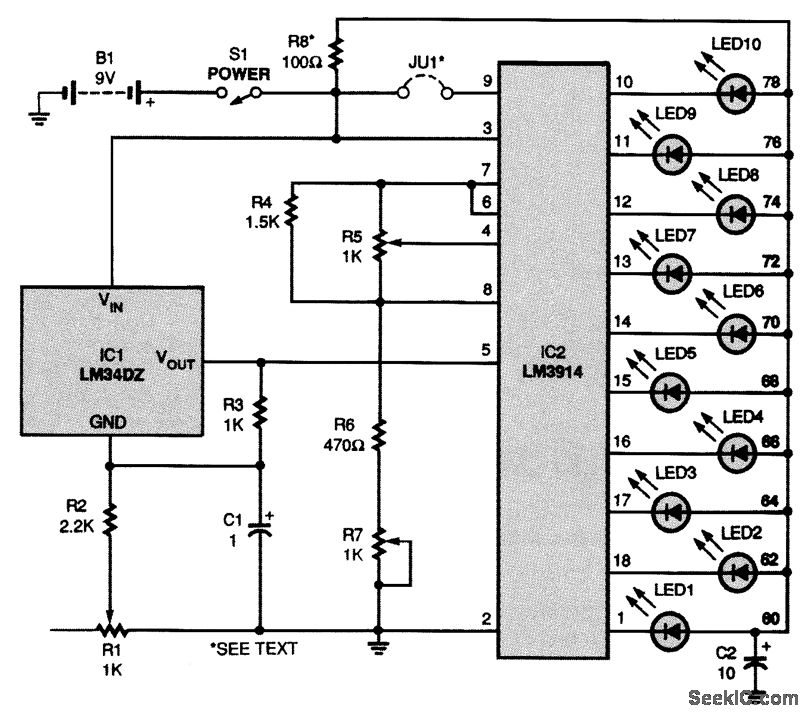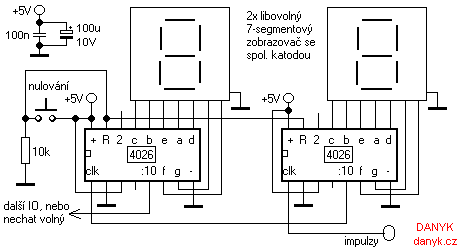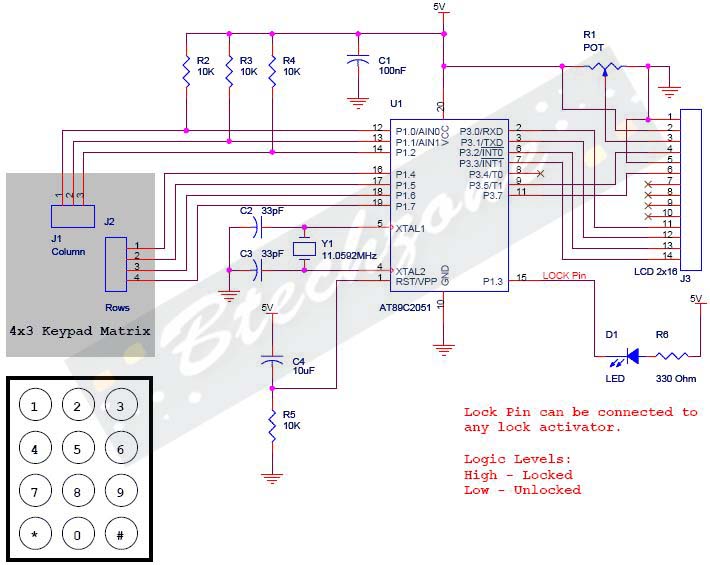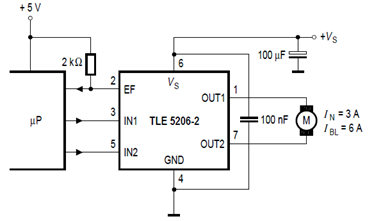
digital thermometer with data
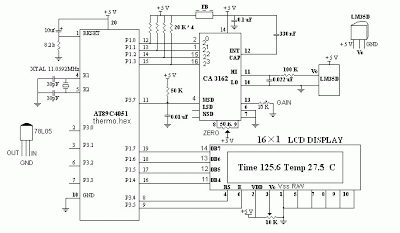
The Digital Thermometer 0-100 °C is a device designed for temperature measurement in Celsius. It utilizes a microcontroller AT89C4051 as its data processor. The temperature sensor employed in this thermometer is the LM35D, which provides accurate temperature readings. The thermometer displays temperature data on a single-line LCD with a resolution of 0.1 °C. The LM35D sensor's output is converted into 4-bit binary data using the ADC CA3162. This binary data is processed by the AT89C4051 microcontroller, which facilitates the operation of the digital thermometer. The final output is presented as digital temperature readings on the LCD.
The Digital Thermometer 0-100 °C circuit consists of several key components that work together to provide precise temperature measurements. The LM35D temperature sensor operates on a linear scale, outputting a voltage that is directly proportional to the temperature in degrees Celsius. This output voltage is typically in the range of 0 to 1.5V for temperatures from 0 to 100 °C, providing a straightforward means to determine the ambient temperature.
The ADC CA3162 plays a crucial role in the conversion of the analog voltage signal from the LM35D into a digital format. This analog-to-digital converter is capable of transforming the voltage signal into a 4-bit binary representation, allowing the microcontroller to process and interpret the temperature data accurately. The choice of a 4-bit ADC limits the resolution to 16 discrete values, which is sufficient for basic applications but may not provide the highest precision for more demanding scenarios.
The microcontroller AT89C4051, a member of the 8051 family, is utilized for its ease of programming and versatility in handling digital data. It receives the digital output from the ADC and executes a program that interprets this data to display the corresponding temperature on the LCD. The programming of the microcontroller involves setting up the necessary input and output pins, configuring the ADC interface, and managing the display output to ensure that the temperature readings are presented clearly and accurately.
The single-line LCD display is an essential component of the thermometer, providing a user-friendly interface for reading temperature measurements. The microcontroller controls the LCD to update the displayed value in real-time as the temperature changes, ensuring that users receive the most current data without delay.
In summary, the Digital Thermometer 0-100 °C integrates a temperature sensor, ADC, microcontroller, and LCD display to create a functional and efficient temperature measurement device. The design emphasizes simplicity and effectiveness, making it suitable for various applications where precise temperature monitoring is required.Digital Thermometer 0-100. 0 °C is a digital thermometer that operates in mode temperature measurement in Celsius ( ° C). Digital Thermometer 0-100. 0 ° C in this article uses data processor in the form of a microcontroller AT89C4051. Temperature sensors used in Digital Thermometer 0-100. 0 ° C. This temperature sensor LM35D. Digital Thermometer 0-1 00. 0 ° C. It uses the temperature measurement data viewer in the form of 1 line LCD viewer. Digital Thermometer 0-100. 0 ° C. It can display the temperature measurement data with a resolution of 0. 1 ° C. Digital Thermometer 0-100. 0 ° C. These temperature sensors make use of LM35D as temperature sensing. In Digital Thermometer 0-100. 0 ° C. This temperature sensor measurement data this LM35D (Level Voltage) is then converted into 4-bit binary data using the ADC CA3162. Then the 4-bit data from ADC CA3162 which is a measurement of data if the temperature is in the AT89C4951 microcontroller so that it becomes an operating principle of temperature measurement based on digital thermometers.
In the final stage of the Digital Thermometer 0-100. 0 ° C. This is the appearance of digital data temperature measurement, using digital data viewer of the LCD 1 line. 🔗 External reference
The Digital Thermometer 0-100 °C circuit consists of several key components that work together to provide precise temperature measurements. The LM35D temperature sensor operates on a linear scale, outputting a voltage that is directly proportional to the temperature in degrees Celsius. This output voltage is typically in the range of 0 to 1.5V for temperatures from 0 to 100 °C, providing a straightforward means to determine the ambient temperature.
The ADC CA3162 plays a crucial role in the conversion of the analog voltage signal from the LM35D into a digital format. This analog-to-digital converter is capable of transforming the voltage signal into a 4-bit binary representation, allowing the microcontroller to process and interpret the temperature data accurately. The choice of a 4-bit ADC limits the resolution to 16 discrete values, which is sufficient for basic applications but may not provide the highest precision for more demanding scenarios.
The microcontroller AT89C4051, a member of the 8051 family, is utilized for its ease of programming and versatility in handling digital data. It receives the digital output from the ADC and executes a program that interprets this data to display the corresponding temperature on the LCD. The programming of the microcontroller involves setting up the necessary input and output pins, configuring the ADC interface, and managing the display output to ensure that the temperature readings are presented clearly and accurately.
The single-line LCD display is an essential component of the thermometer, providing a user-friendly interface for reading temperature measurements. The microcontroller controls the LCD to update the displayed value in real-time as the temperature changes, ensuring that users receive the most current data without delay.
In summary, the Digital Thermometer 0-100 °C integrates a temperature sensor, ADC, microcontroller, and LCD display to create a functional and efficient temperature measurement device. The design emphasizes simplicity and effectiveness, making it suitable for various applications where precise temperature monitoring is required.Digital Thermometer 0-100. 0 °C is a digital thermometer that operates in mode temperature measurement in Celsius ( ° C). Digital Thermometer 0-100. 0 ° C in this article uses data processor in the form of a microcontroller AT89C4051. Temperature sensors used in Digital Thermometer 0-100. 0 ° C. This temperature sensor LM35D. Digital Thermometer 0-1 00. 0 ° C. It uses the temperature measurement data viewer in the form of 1 line LCD viewer. Digital Thermometer 0-100. 0 ° C. It can display the temperature measurement data with a resolution of 0. 1 ° C. Digital Thermometer 0-100. 0 ° C. These temperature sensors make use of LM35D as temperature sensing. In Digital Thermometer 0-100. 0 ° C. This temperature sensor measurement data this LM35D (Level Voltage) is then converted into 4-bit binary data using the ADC CA3162. Then the 4-bit data from ADC CA3162 which is a measurement of data if the temperature is in the AT89C4951 microcontroller so that it becomes an operating principle of temperature measurement based on digital thermometers.
In the final stage of the Digital Thermometer 0-100. 0 ° C. This is the appearance of digital data temperature measurement, using digital data viewer of the LCD 1 line. 🔗 External reference
Warning: include(partials/cookie-banner.php): Failed to open stream: Permission denied in /var/www/html/nextgr/view-circuit.php on line 713
Warning: include(): Failed opening 'partials/cookie-banner.php' for inclusion (include_path='.:/usr/share/php') in /var/www/html/nextgr/view-circuit.php on line 713
